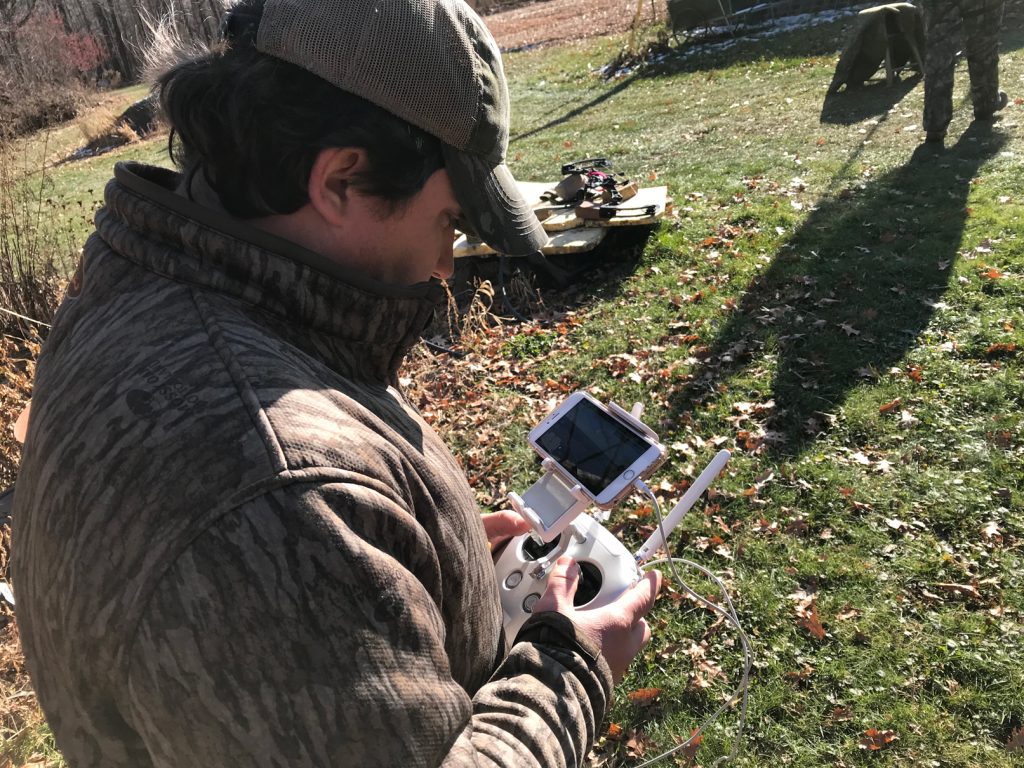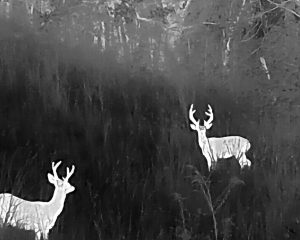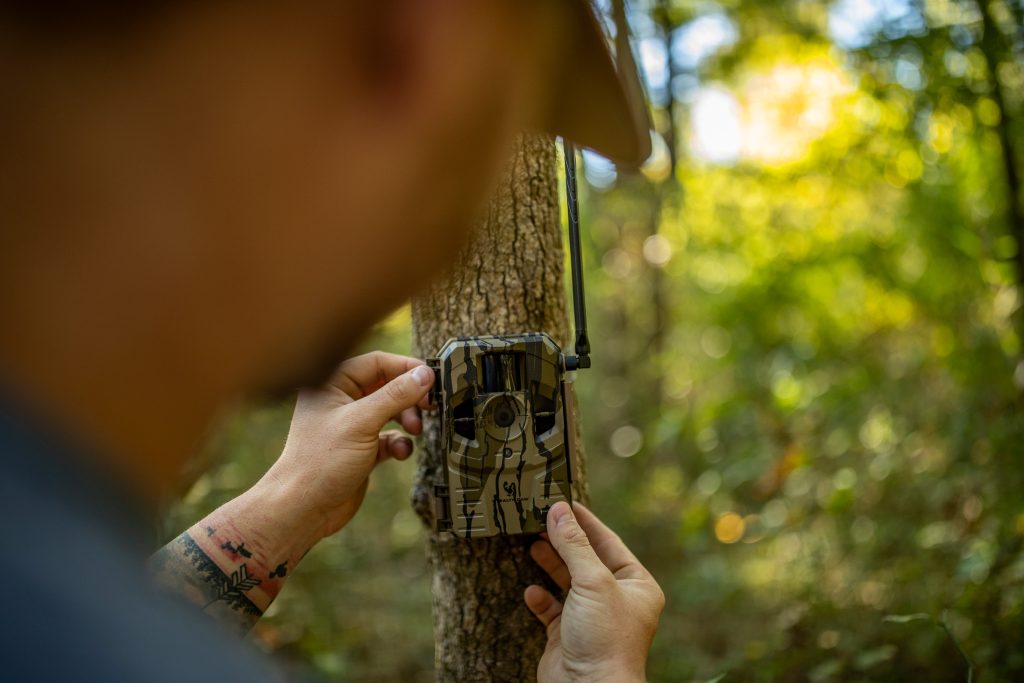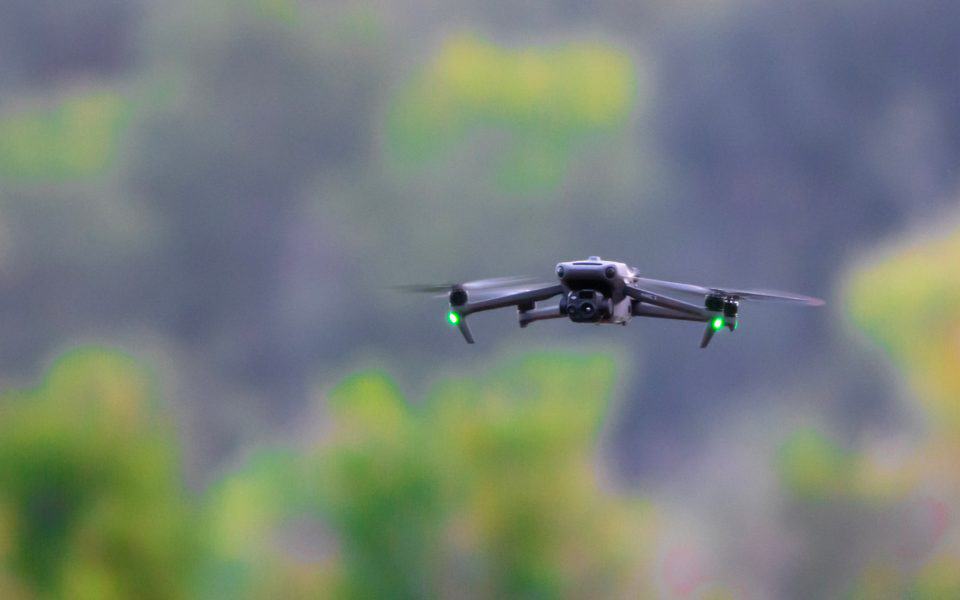The technology debate within the hunting community has become a major discussion, more so in the past ten years than ever before. Today, the average hunter has more tools in their toolbox than many would have ever thought possible, and that trend is picking up tremendous speed. As usual, the path blazed by innovative new technology is followed by a trailing discussion of ethics and morality trying to keep pace with the times. Just like we’re finding out now about A.I. (artificial intelligence), there can be some very beneficial aspects of it, but there can also be dire consequences.
Fair Chase in the Digital Age

The hunting community is having an identity crisis. What was once a game of knowledge, experience, and hunter’s savvy is becoming a pay-to-play arms race to bend the odds ever more in our favor. While this debate truly began with the introduction of the game camera, in my opinion, — and later the cellular game camera — it has hit an entirely new level with the introduction of the Unmanned Aerial Vehicle (UAV), AKA, the “drone.” Up front for today’s discussion is the increasing availability of the night vision drone, however, we must take a look at a number of new innovations and decide whether or not they are ethical when it comes to the laws of fair chase and do they violate the true essence of hunting.
Night vision drones utilize thermal or infrared sensors to give the operator outstanding visibility in the dark of night. Among the massive list of moral applications for this kind of technology is wildlife management. Large game spotted from hundreds of feet above the ground are as easy to see as stars in a clear night sky. Animals can be counted, inventoried, tracked, even individually identified.
From a gamekeeper’s or hunter’s perspective, there is a lot to unpack here. To get started, I’ll plug my dad in as an example. He lives on an average size farm that was once my grandfather’s cattle property. Over the past ten years or so he and I have worked to convert the place from pasture to wildlife habitat. As he so often likes to say, there are four phases of being a deer hunter: first you want to kill your first deer, then you want to kill a lot of deer, in phase three you want to kill a big deer, and, if you are so fortunate as to become a gamekeeper, phase four is when you want to grow a big, healthy deer. My dad has found a lot of enjoyment in phase four, and greatly prefers creating habitat over pulling the trigger these days.
With all that in mind, what a tremendous tool night vision drones would be for his management practices. He could fly the whole farm on one battery and count every deer, every night. He could inventory the doe to buck ratio throughout the season. He could spot predators. He could see which bedding areas are being utilized and which ones are not. He could find each individual buck’s bedding spot.
Now the problem begins to emerge — I’m still stuck on phase three. For his own intents and purposes, I don’t imagine my dad spotting a big buck in the night and going out to kill him the next morning, but is he going to keep that deer a secret from me? I helped grow that buck! I helped plant the food plots, I attended the meetings with the biologist, I helped with the native grass project, I deserve to know about that buck, right?
 The hunting world’s identity crisis can be captured right here. How and where do we draw the lines on technology? Are there beneficial uses for night vision drones in wildlife management? Absolutely! Could night vision drones introduce a new spot-and-kill technique that eliminates the sport of the hunt? Absolutely! As it stands today, drones fall into a particularly grey area.
The hunting world’s identity crisis can be captured right here. How and where do we draw the lines on technology? Are there beneficial uses for night vision drones in wildlife management? Absolutely! Could night vision drones introduce a new spot-and-kill technique that eliminates the sport of the hunt? Absolutely! As it stands today, drones fall into a particularly grey area.
There are federal laws governed by the FAA intended to regulate when, where, and how these vehicles fly. Such laws are understandably difficult to enforce. At the state level, many states have banned the use of drones during the hunting season, although these laws generally only pertain to public hunting lands. As an example, in Alaska, on hunts involving a helicopter or plane ride to the hunting destination, hunters may not kill on the day that they flew in. The spirit of such regulations is to maintain the principles of fair chase and sportsmanship. How they end up being implemented, adjusted, and enforced across the nation remains to be seen.
The Boone and Crockett organization has adjusted its policies to reject from its records “any trophy taken with the assistance of a UAV.” Yet, while the ethical questions around spot-and-kill tactics are the easiest topic to find agreement on, this is far from the only way drones are being used in hunting today.
At most duck camps, mine included, drones have become commonplace for scouting. It is much less intrusive to spot ducks from above than to drive around and risk spooking them over to your neighbor’s place. For deer recovery, a nationwide network of night vision drone operators has formed to provide fast assistance to hunters searching for a wounded or lost deer before the body goes cold. Furthermore, pig hunters can rejoice that yet another tool is available to help them control the destructive, invasive pests on their properties. So, is it possible to allow the use of a technology for some purposes but ban it for others? Do we have to accept that we might spook our ducks while scouting, and we might lose that buck if we make a bad shot? Or do we accept that this technology, despite good intentions, may bring with it a controversial new hunting style?
Night vision drone technology certainly entered the hunting world with good intentions. More deer are being recovered that would have otherwise been lost, and gamekeepers are making more informed decisions without disturbing their wildlife in the process. As usual, the technology itself is far ahead of the regulations being drafted to control it, and many gamekeepers on private properties are left to make these decisions for themselves. That being said, I’d like to close with a story from my hunting camp in the Mississippi Delta that took place over these past few years.
I am fortunate enough to be a member of a large hunting property in the bottomland hardwoods of the Mississippi Delta. On the main body of this property, we have two camps made up mostly of fourth-generation members who have hunted the place passionately from one generation to the next going back to the 1930s. A few years ago on opening weekend, word quickly spread across our camp that one of our older veteran hunters on horseback had jumped the most giant buck he had ever seen in his life and watched in awe as the deer quickly dipped back in to the thicket to escape.
 When I arrived back from my hunt later that morning, a lot of nervous looks were cast in my direction. When someone finally spoke up, the deer was apparently sighted within 50 yards of one of my known bow stands. Everyone assumed I was hunting that deer and keeping him a secret, but the truth is that I was not aware of him. As news spread around camp, it was discovered that members at the other camp on the property were aware of him as well, and had game camera photos to prove it. They were hunting him hard, and now…so were we.
When I arrived back from my hunt later that morning, a lot of nervous looks were cast in my direction. When someone finally spoke up, the deer was apparently sighted within 50 yards of one of my known bow stands. Everyone assumed I was hunting that deer and keeping him a secret, but the truth is that I was not aware of him. As news spread around camp, it was discovered that members at the other camp on the property were aware of him as well, and had game camera photos to prove it. They were hunting him hard, and now…so were we.
That season I witnessed the most concerted effort to kill a big buck on that property that I have ever seen. No fewer than a dozen expert hunters set in on that buck, with unknown numbers of cell cameras deployed over a 1,000-acre zone or more. He was glimpsed, on the hoof and in broad daylight, by no fewer than four people throughout the season. The closest encounter was a squirrel hunter on horseback.
Late in the season, two men on a lazy afternoon squirrel hunt on horseback rode by the intersection of a couple trails where the encounter on opening morning had occurred. Before either could say it out loud, four bucks jumped across the trail one after the other, just ahead of them. “He’ll be the last in line” one said, and sure enough, just to the left in the thicket, there he was at 30 yards. There was some brief expletive-ridden panic as the hunter on the left lunged for his just-in-case 30-30 lever action, and by the time he had it in hand the deer had vanished for good.
 The season ended with more than a handful of proficient hunters, myself included, soundly defeated. We deployed every tactic and tool at our disposal to be the one to bag this buck of a lifetime, and the buck won. After the frustration of failure had worn off, I found myself feeling downright gleeful that I still lived in a world where a savvy old buck could still outsmart me, and that despite the balance of fair chase tactics and modern technology tipping ever more in favor of technology, this buck could still do what big bucks do and show the hunters who’s boss.
The season ended with more than a handful of proficient hunters, myself included, soundly defeated. We deployed every tactic and tool at our disposal to be the one to bag this buck of a lifetime, and the buck won. After the frustration of failure had worn off, I found myself feeling downright gleeful that I still lived in a world where a savvy old buck could still outsmart me, and that despite the balance of fair chase tactics and modern technology tipping ever more in favor of technology, this buck could still do what big bucks do and show the hunters who’s boss.
As I think about the implications of night vision drone technology becoming more accessible to the average hunter, I can’t help but imagine how it might have changed the course of history had it been available to someone on our property during that hunting season. It seems all but guaranteed that the owner of that drone would have found that buck’s secret spot overnight and gone in to kill him the next day. We had him pegged to at least a 500-acre zone, maybe even tighter than that. A drone can cover double that range on a single battery. Had it been the reality that someone located him at midnight with their flying heat-vision camera hovering hundreds of feet above the earth and later gone in to kill the deer, I can’t help but feel a bit depressed by the thought.
What comes to mind for me is that the balance of fair chase hunting is no longer natural, as it was when we were growing up. It has to be a conscious decision at this point. The fact is few people, if any, are buying night vision drones with the intention of spot-and-kill hunting. But despite good intentions, this technology will bring along undeniable side effects. Self-imposed limitations are tricky when you have competitive fellow camp members and neighbors. How it all shakes out remains to be seen, and that is especially true for private lands. What is certain is that the technology and ethics discussion should be on the top of the mind for all gamekeepers as advanced technologies continue to become more and more accessible each season.
Take a deeper dive into the topic of fair chase in the digital age on the Gamekeeper Podcast episode #197.

Join our weekly newsletter or subscribe to GameKeepers Magazine.
Your source for information, equipment, know-how, deals and discounts to help you get the most from every hard-earned moment in the field.







